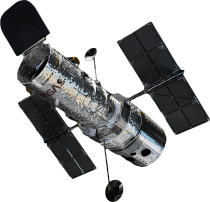




| Back to Interesting Follow-up Targets By: Xinfeng Xu |
This is a list of the interesting objects found with z > 2 with magnitude g < 18, epoch > 01/01/2011.
The search was done by REU students: Sean Collier, Sean Heston, and Jake Pighini and was checked by Nahum Arav.
The names of each object are linked to the PDF file of the SDSS spectra with the ions of each system identified. The blue system is considered the "main" system.
NOTE: Velocity is in units of 1000km/s. (e.g. 2.4 = 2400km/s) and flux is in units of 10e-17 ergs/s/cm2/A. If the rest wavelength of 1350 angstroms was not in the range, flux was identified at 1600 angstroms.
| <1500 Dec | |||||||||||
| Object | file name | redshift | RA | Dec | flux | depth | line | V | dV | grade | Comments |
| SDSSJ1007+0532 | spSpec-55677-4875-328.fit | 2.880 | 10:07:11.81 | +05:32:08.97 | 150 | 1.10 | SiIV | -4.7 | 0.7 | A+ | Has good SiIV & SiIV excited. Can be observed from VLT. Object is very bright about 10^-15. Strong seperated SiIV. Wrong Redshift |
| >1500 Dec | |||||||||||
| SDSSJ0831+5325 | spSpec-57012-7302-588.fit | 2.794 | 08:31:04.90 | +53:25:00.15 | 35 | 0.90 | SiIV | -7.8 | 4.6 | A good SIV follow up. Has wide deep SiIV. Interesting but unobservable with VLT. Wrong Redshift | |
| SDSSJ0845+3420 | spSpec-56337-5186-554.fit | 2.145 | 08:45:38.66 | +34:20:43.62 | 30 | 1.07 | SiIV | -9.7 | 8.1 | Good northern hemisphere follow up target. | |
| SDSSJ0916+6213 | spSpec-56722-7446-523.fit | 2.807 | 09:16:10.33 | +62:13;26.69 | 60 | 1.79 | SiIV | -6.5 | 5.7 | Good northern hemisphere follow up target. Has good SiIV. Wrong Redshift. | |
| SDSSJ1004+4700 | spSpec-56338-6663-220.fit | 2.536 | 10:04:59.14 | +47:00:58.00 | 38 | 0.92 | CIV | -19 | 6.6 | CIV system at around 25000km/s. Interesting Object. | |
| SDSSJ1029+6223 | spSpec-56667-7097-456.fit | 2.466 | 10:29:00.79 | +62:23:42.16 | 37 | 0.59 | CIV | 1.4 | 0.4 | Possible redshifted CIV | |
| SDSSJ1107+6420 | spSpec-56746-7110-476.fit | 2.307 | 11:07:35.57 | +64:20:09.07 | 68 | 0.22 | CIV | 2.4 | 0.2 | Possible redshifted CIV | |
| SDSS1230+4014 | spSpec-55704-3967-872.fit | 2.047 | 12:30:11.84 | +40:14:42.92 | 62 | 1.44 | CIV | -2.0 | 0.5 | Interesting since we see SiII&SiII* and CII&CII* | |
| SDSSJ1623+4818 | spSpec-56448-6317-445.fit | 2.850 | 16:23:31.15 | +48:18:42.29 | 30 | 0.57 | SiIV | -0.82 | 0.1 | B+ | Possible SIV & SIV* but looks too strong. Probable NIII & NIII* |
Maintained by the Virginia Tech Quasar Outflow Group. Please cite responsibly.



